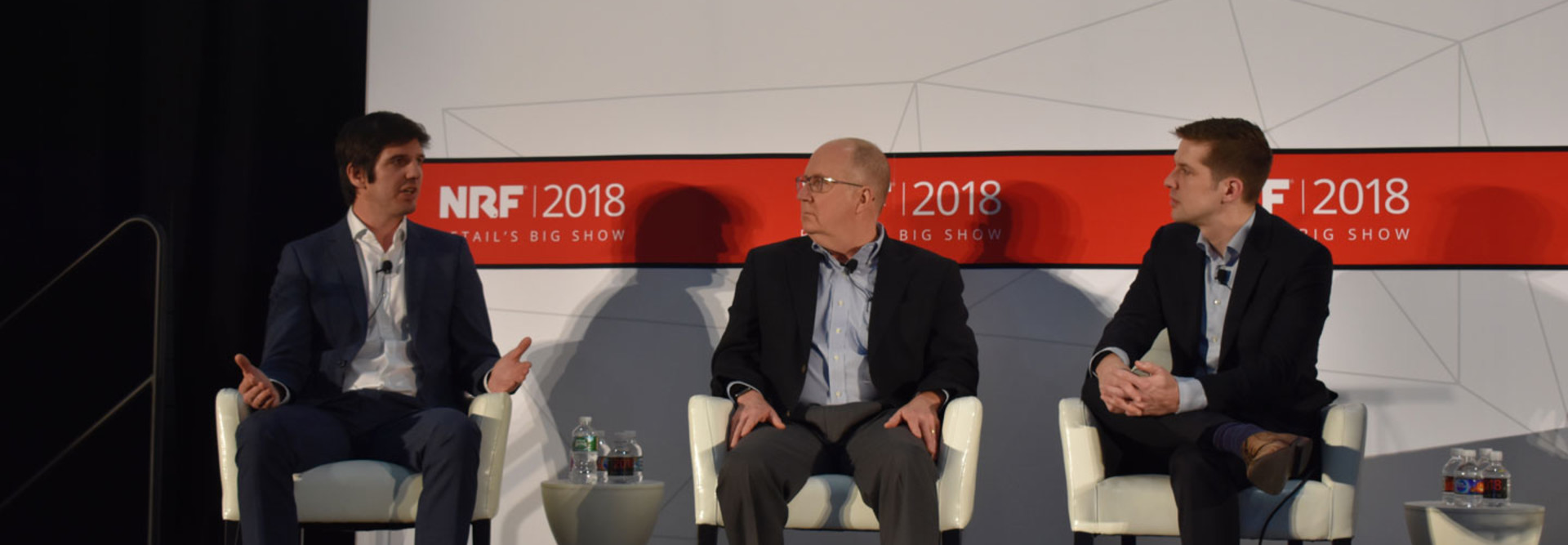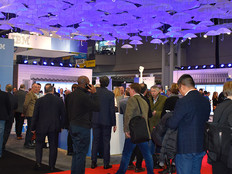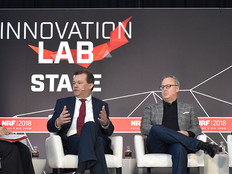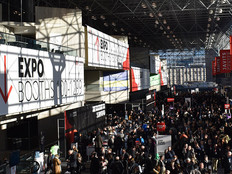NRF: IoT, Analytics Can Enhance the Retail Customer Experience
What do retailers say is their single biggest challenge? New forms of competition.
That was a key data point CDW found when it surveyed its retail customers, as 32 percent said new kinds of competitors, online or otherwise, were the top hurdle. Another 22 percent cited the need for more strategic business models and 18 percent pointed to the need for more internet bandwidth to meet customer needs.
The research also suggests that retailers have keen areas of interest in technologies that they think can help them meet those challenges, John Chancellor, senior manager of professional services at CDW, said during a session at NRF 2018: Retail’s Big Show in New York City on Jan. 15. According to the survey data, 98 percent of CDW’s retail customers showed interest in new data analytics technology as well as in new software for enhancing the customer experience, and 76 percent showed strong interest in integrating Internet of Things technology into their businesses.
These technologies can help retailers enhance the customer experience, panelists from CDW said during the session. “In retail, I think the customer experience is actually one of the most important things to really bring life back into the brick-and-mortar world,” said Link Simpson, IoT and digital transformation practice lead at CDW. “We’re seeing, across the board, customers looking to have a differentiated experience.”
Simpson said that CDW, by working closely with customers and strategic technology partners, can help deliver proven IT solutions that meet customers’ needs for where they want to take their business. CDW helps customers define those goals through “envisioning workshops.” During these workshops, CDW partners with customers to assess the current state of their IT environment and discuss customers’ desired outcomes to build a digital transformation roadmap.
“Our role with you is an IT orchestrator,” Simpson said. “We get all of the various moving parts and bring them to a symphony, if you want to use that analogy, where it all works together.”
SIGN UP: Get more news from the BizTech newsletter in your inbox every two weeks!
IoT and Analytics Prove Key to Retail Success
Simpson said it is important for retailers to differentiate between IoT and digital transformation for retailers. IoT solutions help retailers connect the physical world to the digital one. Through sensors, cameras, radio frequency identification (RFID) tags to track inventory and other solutions, retailers can get a better sense of who their customers are, where they are in stores and how they are interacting with products, he said.
“That new wealth of information … informs the store of what’s going on so they can make better business decisions and better serve the customer,” said Simpson, whether that involves sending a notification to a sales associate’s tablet while they walk around the store or helping the associate assist a customer in getting an item that is not in the front of the store. “All of that just changes the experience and makes it fun to go back to the store.”
Adrian Woodrup, practice lead for IoT and analytics at CDW UK, said “everyone should be or is looking at analytics” in the retail sector, collected via Wi-Fi, Bluetooth and other sensors. “We should be taking as much data as we can, blending that data and looking for trends,” he said.
RFID tags on items and analytics can help retailers map out their stores and can inform retailers about which products are being sold or moved, which can then trigger sales associates to replenish inventory from a back room, Simpson said. Beacon technology can help retailers understand how customers move through their stores, which can help retailers better position products. All of that is enabled by pervasive Wi-Fi networks with strong bandwidth.
The Stages of Digital Transformation in Retail
Simpson said it is important to put a framework around emerging technology solutions. Many of CDW’s retail customers are still focused on deploying pervasive connectivity to make sure they have a strong technology foundation in place to accomplish their long-term goals, he added.
Retailers should think about digital transformation in three phases, Simpson said. First, they should start with changing their business models to increase operational efficiency. “What can you do to bring costs under control?” he said.
Then, with a strong technology foundation in place, retailers can shift to focus on how they can differentiate themselves in the market. “How do you differentiate your message from a competitor down the street or across the country?”
From there, Simpson said, retailers can go on a natural progression to the third stage: disruption. “How do you help use technology to create not just an efficient and differentiated customer experience, but how do you create something that is unique to you that may not only help with differentiation but may change the game?” he said.
AR and AI on the Horizon for Retailers
Augmented reality and virtual reality are exciting for retailers, as is the growth in artificial intelligence, Simpson said. Yet he advised retailers “not to get too sucked into the things that are too far down the road.”
Woodrup said he thinks AR will bring retailers new revenue streams, as it could allow them to sell digital subscription services — games, content or educational services, for example — built around their products.
If retailers want to lay out plans that extend two to four years into the future, it’s fine to plan to deploy such technologies, he said. Yet he also said retailers should try to figure out which technology investments they can afford right now that will bring value to their organizations.
For our full array of articles and videos from the conference, check out BizTech’s coverage of NRF 2018 conference here.









